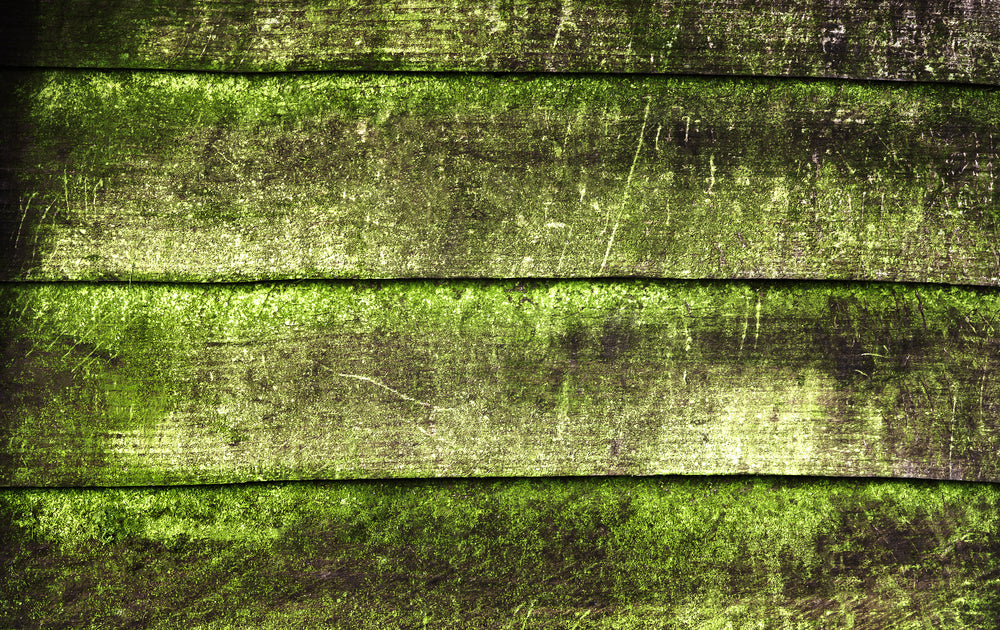
How to Remove Algae from Fence Panels
If you’ve noticed green staining and slime creeping up your wooden panelling, it might be time to try out our effective method for how to remove algae from fences.
Not only can algae be unsightly - it can also damage the integrity of the wood over time, leaving it vulnerable to the elements. Take action now to remove green algae from fence panels and wooden garden gates with our simple-to-follow guide.
We’ll tackle what causes green algae on fences, as well as how to remove it and keep your garden wood resistant to it in the future. If you need new hardwood fencing that doesn’t surrender easily to algae, our Iroko hardwood fences and gates are rot and pest resistant, as well as being durable against the volatile British weather.
Here’s how to remove green from fences by Stellar Gates, the gate and fence experts.
The Ultimate 2-Step Method to Remove Algae from Fence Panelling
There are only two key ways to properly remove green algae from fence panels: cleaning agents and force. For each of these two steps, you can opt to use different variants depending on your personal preference, however, the two key steps remain the same.
This is how to remove green from fences simply and effectively:
1. Apply Either a Natural or Chemical Detergent
Firstly, you’ll need to apply either a natural or chemical cleaning agent that cleans off any mould, mildew or algae. There are a range of products that you can use to remove algae from fences, including:
- Chemical algae remover products, used at whatever ratio the manufacturer advises
- Bleach, diluted in water
- Distilled white vinegar
- Teatree oil, for a more natural option
These are the top choices for most effective algae removal but, it’s worth bearing in mind that a chemical cleaning agent will be far more caustic. If you’re working with thin or damaged fences you might want to start with a more gentle cleaning agent first.
Note: Always wear rubber gloves and personal protective equipment when using chemical detergents that can irritate skin.
2. Use Pressure or Force
Secondly, you’ll need to apply some force in order to apply the detergent thoroughly and to get rid of green on fences for good. There are several ways to do this:
- Scrub by hand using a brush
Scrubbing with a stiff brush and a detergent is a tried and true method for how to remove green from fence panelling or any other outdoor wood. With some elbow grease and one of the above detergents, you’ll find that any green algae comes off of the wood. Then, simply wash the wood down with fresh water from a bucket or garden hose. The downside of this method, of course, is that it does take some time and effort.
- Scrape using a metal scraper
Sometimes, when algae takes hold of wood grain, it can be especially tricky to know how to get rid of green on fence panels effectively. In these cases, a metal scraping tool from a DIY shop can be used to get at any stubborn spots. This will ensure that you get rid of green on fence panels that might have clung to the grain of the wood, eliminating staining.
- Use a pressure washer
Pressure washing can be a highly effective method to remove green from fence panels that is proving stubborn to shift. Use a wide spray nozzle on your jet wash and start with lower pressure, gradually increasing until it is getting rid of algae easily but not putting undue pressure on the panels. You should find that it takes care of algae easily. Make sure that you wear goggles and stay at least several feet away from the fence to ensure personal safety while operating a pressure washer.
Causes and Prevention
Once you’ve treated your case of algae or mildew and allowed the fence time to dry out, it’s time to take steps to ensure it doesn’t recur. After all, there’s no point taking the time to remove algae from fence panels with hard work if it’s immediately going to creep back.
Apply a topical wood treatment like an external oil or wood preservative to keep the elements from deteriorating wood. This can help to extend the lifespan of your wooden fences and gates and keep it looking good for longer by slowing down water absorption. This is one of the key causes of mould and algae growth.
What Causes Green Algae on Fences?
As we’ve just touched on, damp is a key factor in what causes green algae on fences, gates and other outdoor wooden surfaces like garden furniture. But it’s not the only one.
Algae is a living organism that requires nutrients to grow, and it’s the dirt, dust and soil residue that collect on fences that aren’t regularly maintained that it feeds on. Humid, damp, cold and shady environments - just like those in a typical British garden - are ideal conditions for algae growth. That’s why it’s important to choose quality hardwood fence panelling and stay on top of regular maintenance.
Choose Robust Fencing That Won’t Let You Down
Now that you’re prepped with the knowledge of how to remove algae from fences properly, you can get to work. However, if your panelling is looking too tired to restore, you might need to consider investing in new fences. All of our fence panels are made from Iroko hardwood, a naturally pest and rot resistant choice that won’t let you down. Available in custom sizing options for a perfect fit, as well as matching hardwood garden gates and gate ironmongery for a seamless look.
If you have any questions or queries, reach out to the team at Stellar Gates, today.
Products
View all

